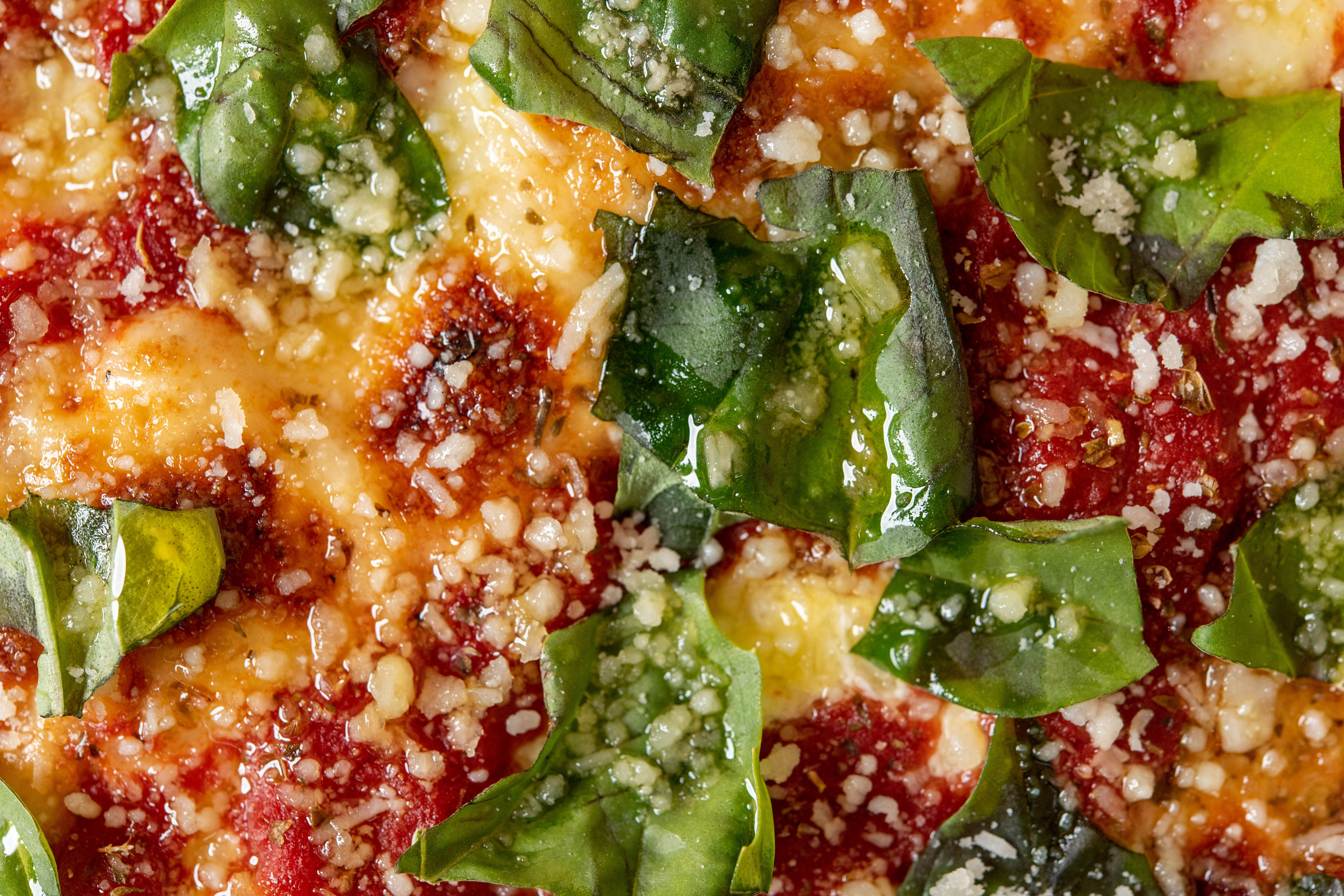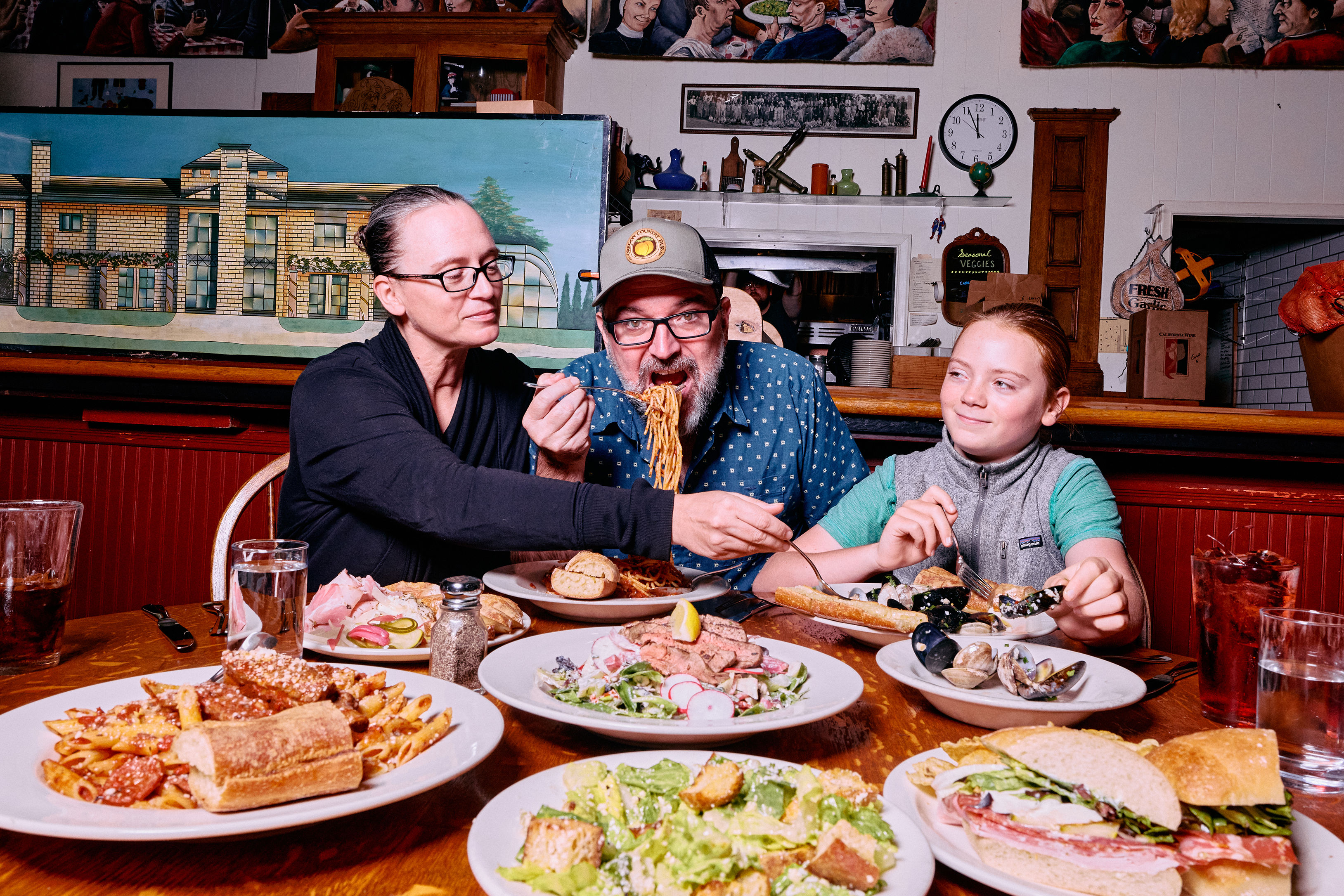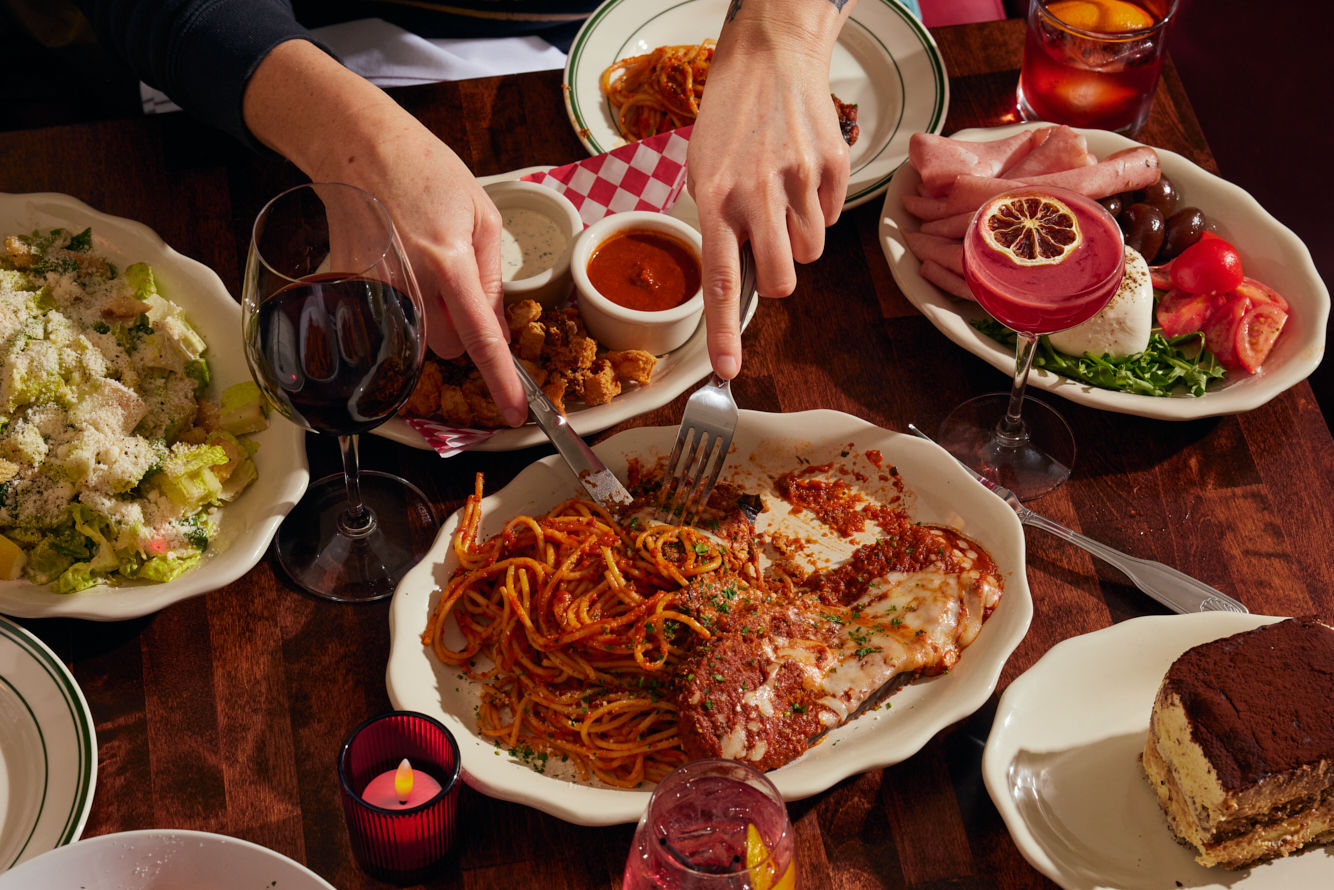Pinolo Gelato Pays Homage to Oregon Farms and Italian Cuisine
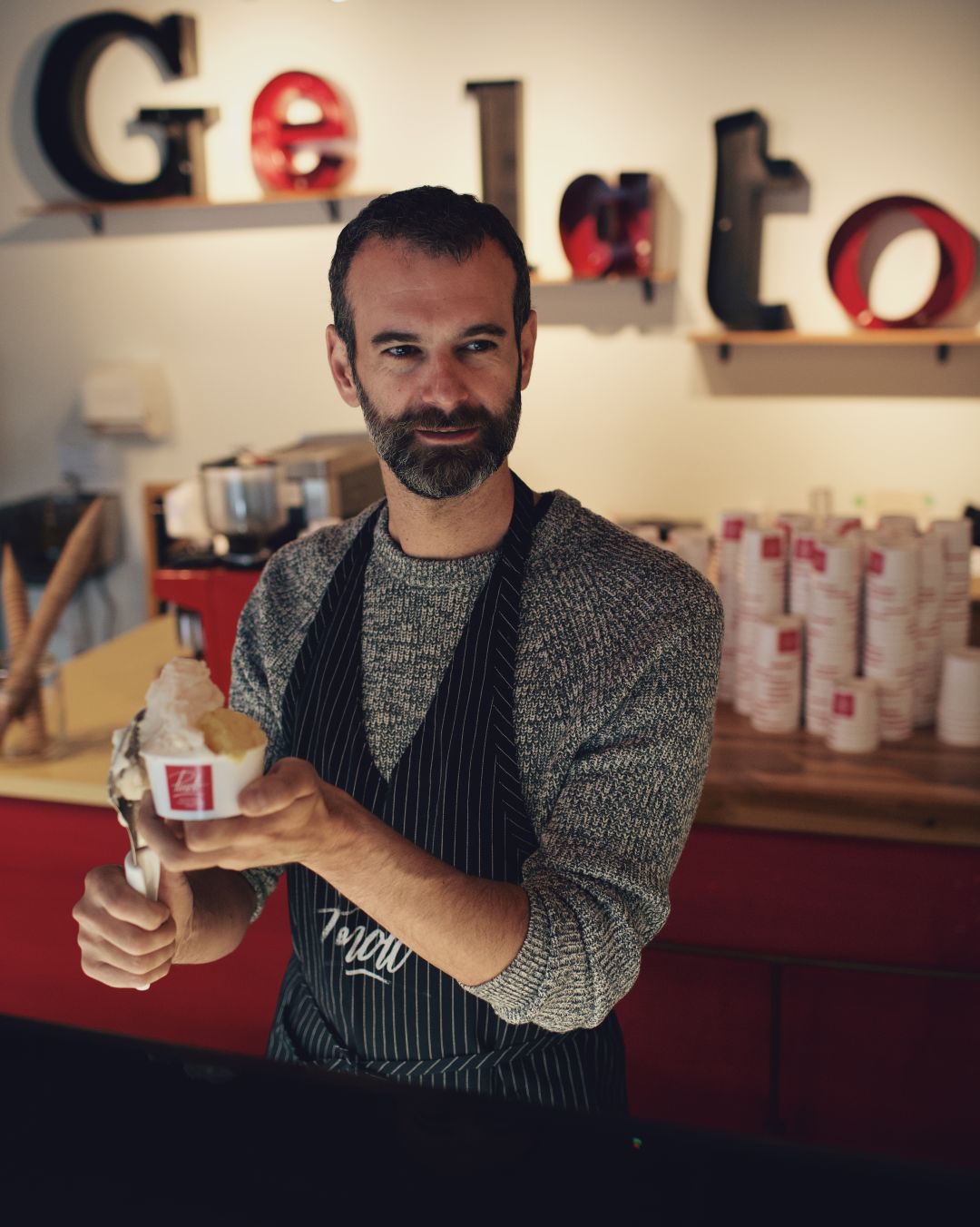
Sandro Paolini scoops gelato at Pinolo.
It’s easy to romanticize the gelato in Italy, eaten while strolling past the Trevi Fountain in Rome or along the Arno River in Florence. But according to Sandro Paolini, the owner of Pinolo Gelato on SE Division, Italian gelato often isn’t all it’s cracked up to be. I can also vouch for this after my time studying abroad in Florence and learning to make gelato during my internship in a gelato shop. At many shops in touristy areas, you’ll see heaping piles of mass-produced, nearly neon-colored gelato on display in store windows—and they don’t taste nearly as good as they look.
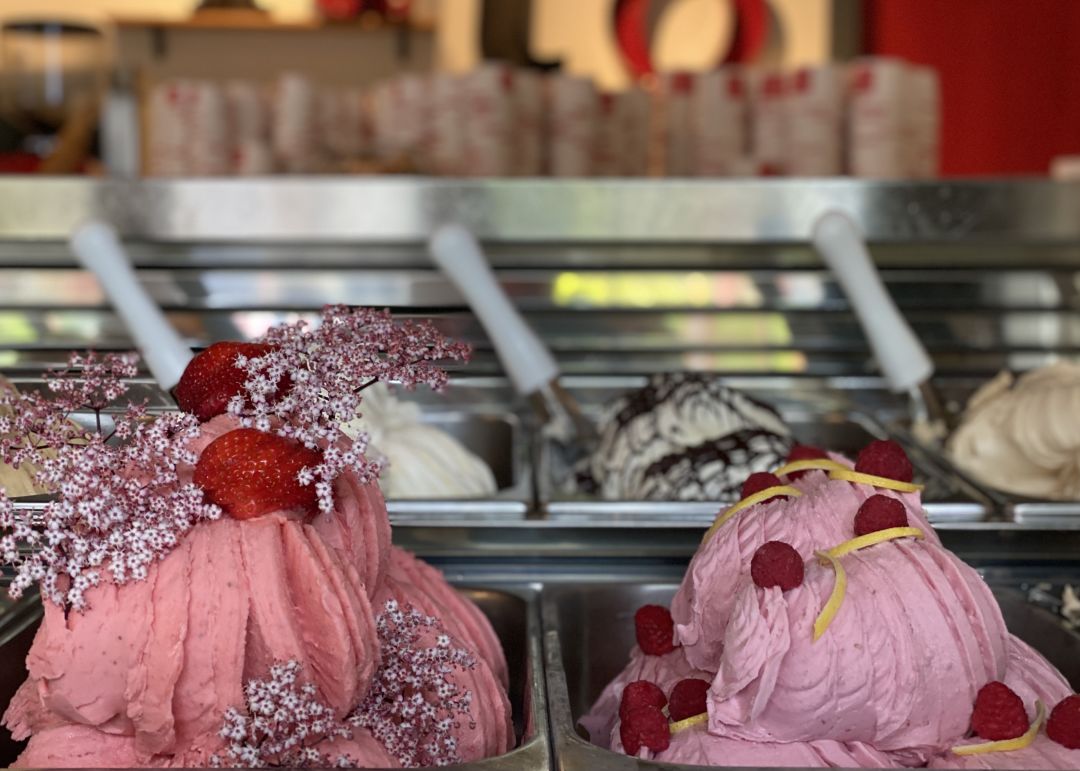
Two seasonal summer flavors—fioritura (strawberry-elderflower) and raspberry with lemon zest
So Portland is truly lucky to have Pinolo Gelato, a gelateria that’s not only the best I’ve tried on the West Coast, but that can also stand up to some of the top-tier shops in Florence. The shop serves a dozen flavors at a time, ranging from classic Italian to creative combos like huckleberry-thyme. But in true Oregon and old-school Italian fashion, Paolini, thanks to his agricultural background, is also mindful of the ingredients he uses, whether sourced from Italy or Oregon.
“In the 80s, they used to use a lot of palm oil—so many bright colors,” Paolini says. When he was growing up in Pisa, good gelato shops were few and far between. With the rise of the Slow Food movement and artisanal chains like Grom in 2003, demand grew for gelato made from scratch using quality local ingredients. But many Italian gelato shops even today still use pre-made bases that include pre-measured sugar, dry milk, and gums for stabilizers, not to mention artificial colors and flavors.
Paolini grew up in a family with exacting standards when it comes to food and drink. His grandparents owned a sheep farm in Tuscany, where they had access not only to fresh sheep’s milk, but to the olives and sunflowers they grew on the farm, plus homemade wine. Nearby, they’d forage for fresh berries. When his father took over, Paolini would help out on the farm during the summer.
That love for agriculture followed him to university in Florence, where he studied forestry, agriculture, and environmental science. In 2011, he moved to Portland, where he worked with farms in town and on Sauvie Island. He returned to Italy in 2014 to a struggling economy and dismal job market. His game plan? To study gelato hands-on at an artisanal gelato shop in Pisa called Io e Gelato (Gelato and I), then head back to Portland to open his own gelato shop, Pinolo Gelato.
Paolini opened Pinolo Gelato in 2015 in an attempt to fill what he felt was a void in Portland's Italian food options, with a small offering of classic Italian gelato flavors like pistachio, hazelnut, and fior di latte. Emblazoned on the shop's window: "Gelato, the official Not Ice Cream of Italy." Inside, there's an explainer of the difference between the two frozen treats. A quick primer: Gelato has less air than ice cream, and it also has less fat (it typically contains less than 10% cream, while premium ice cream is made up of around 50% cream). Gelato is also served at a higher temperature than ice cream. These three factors combined means that gelato is denser, velvety-textured, and lighter, yet more intensely flavored.
The shop’s namesake flavor, pinolo, translates to pine nut—Paolini’s favorite flavor of gelato. He makes this flavor only a few times a year due to the cost of pine nuts; he won’t use Chinese pine nuts, but instead sources all his pine nuts from Pisa because he prefers their flavor. “I’m so proud of that,” he says. He sources almonds from Sicily, as well as pistachios from the Bronte region. But what really shocks many of his customers: he prefers Italian hazelnuts over Oregon hazelnuts. “The hazelnuts from here are really woody, and the peel is really thick,” he says. Instead, he sources Gentile delle Langhe hazelnuts from the Piemonte region. The name of this cultivar translates to “delicate.” “It’s a really sweet flavor that doesn’t need a lot of sugar,” he says. Plus, these hazelnuts are crushed with heavy steel rolls to create a uniform, smooth paste—something that’s not possible in his kitchen with a food processor.
But when it comes to dairy, Paolini’s sold on Oregon. “I think the milk here is better than the milk in Italy,” he says. In Italy, farmers are working with less land, so cows don’t have room to roam and eat grass, unlike in spacious Oregon.
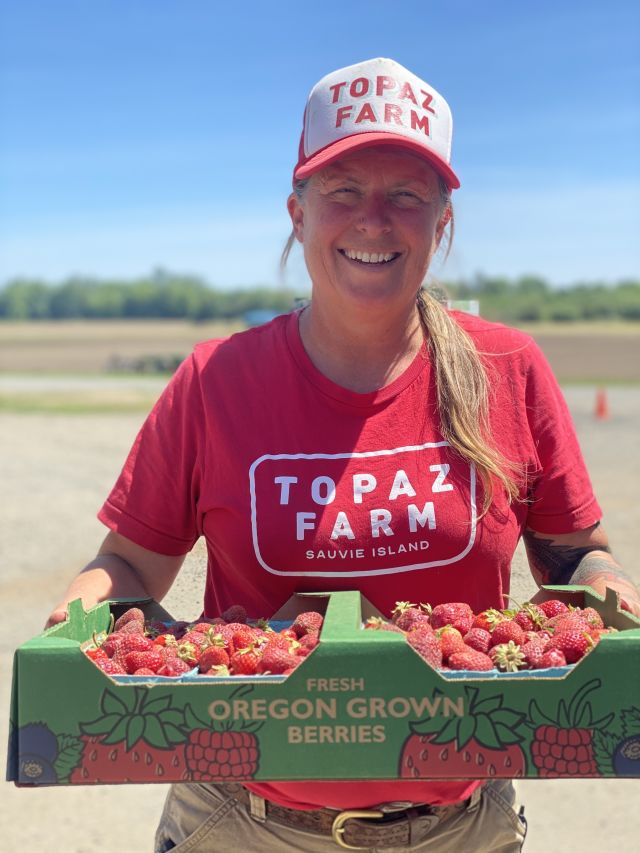
Kat Topaz, co-owner of Topaz Farm
He’s also a big fan of Oregon berries and stone fruit from local farms like Topaz Farm on Sauvie Island—a farm that he selected because of their sustainable practices, including rotating crops to regenerate the soil and using bokashi (fermented food waste and other organic matter) to nourish the plants and soil. “[Farmers] are not just the people who produce food—they’re the people who take care of the environment,” Paolini says. Later in the summer, he’ll make gelato from marionberries, blackberries, raspberries, blueberries, huckleberries, elderberries, and stone fruit, a combination of wild fruit that he forages himself and that he buys from local farmers.
After a few years of making classic Italian gelato flavors with top-notch Oregonian and Italian ingredients, Paolini wanted a challenge. “You get bored,” Paolini says. “And it doesn’t explain the variety that we have within Italian cuisine.”
So he started creating new flavors inspired by Italian flavor profiles that you normally wouldn’t find in gelato. This spring, he transformed the torta cubrisci—an Easter cake found in a small town of 4,000 people near his home in Pisa—into a gelato flavor, combining rice, chocolate, lemon, orange, and pasta frolla (Italian sweet pastry dough). And while many Italians are hesitant to stray from tradition when it comes to gelato flavors, Paolini loves to experiment with savory ingredients like Dundee olive oil and ricotta, plus botanicals like rosemary, thyme, and purple elderflower that he sources from neighbors’ backyards and combines with Topaz Farm strawberries for a seasonal summer sorbetto called fioritura.
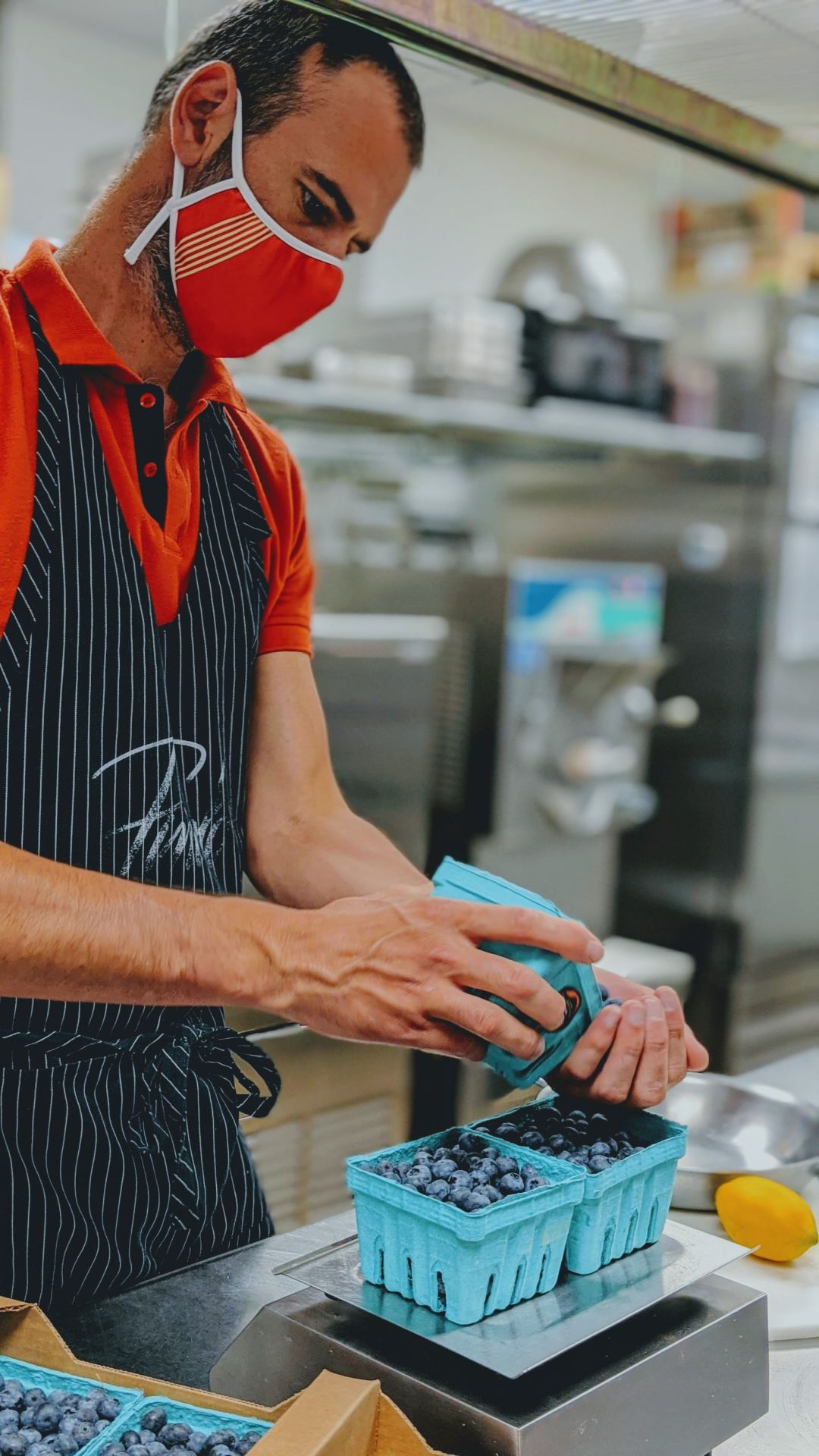
Paolini makes blueberry gelato
But one of Paolini’s favorite parts of Pinolo, besides crafting gelato and working with sustainability-minded farmers, is connecting with the local community. During the early days of the pandemic, he reduced the shop’s hours down to online order pickup once a week—and the line stretched around the block. “It was so overwhelming—in a positive way,” he recalls. The shop has also drawn a following among the local Italian community. “I never understood how many Italians were here in Portland until I opened the gelato shop,” he says.
With Pinolo, Paolini has brought one of the most important aspects of Italian food culture—the social aspect—to Portland. Food, especially gelato, is best enjoyed with family, friends, or neighbors, not alone on your couch or in the car. It’s meant to be eaten while chatting at sidewalk tables or strolling down a bustling street like Division. Soon, thanks to the community’s support, he hopes to expand with a second location of Pinolo. He doesn’t yet know where, but he wants to open in a hub of community activity—perhaps in Slabtown or on Alberta Street.
“Gelato is not just to get a sweet treat,” Paolini says. “It’s a social connection.”
